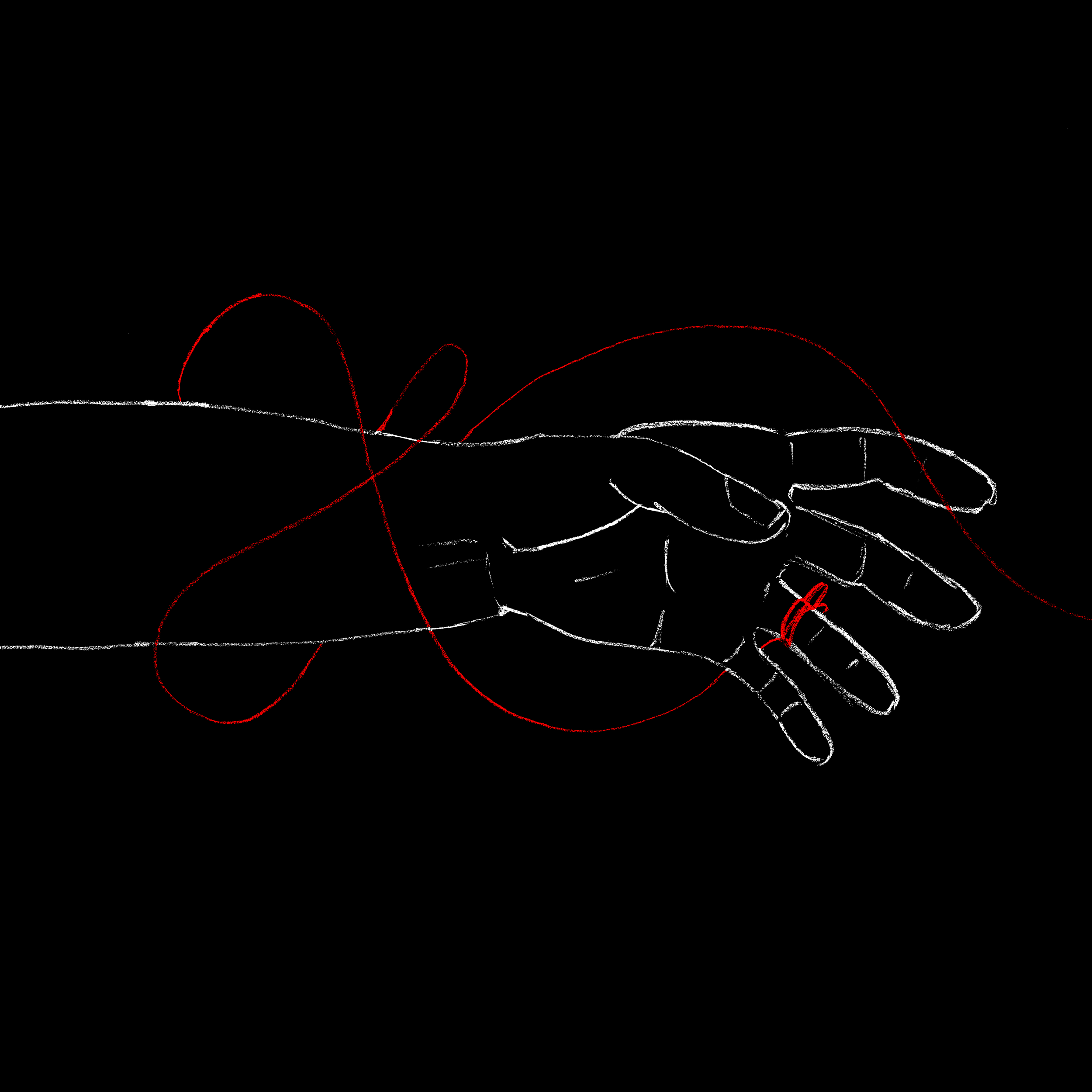
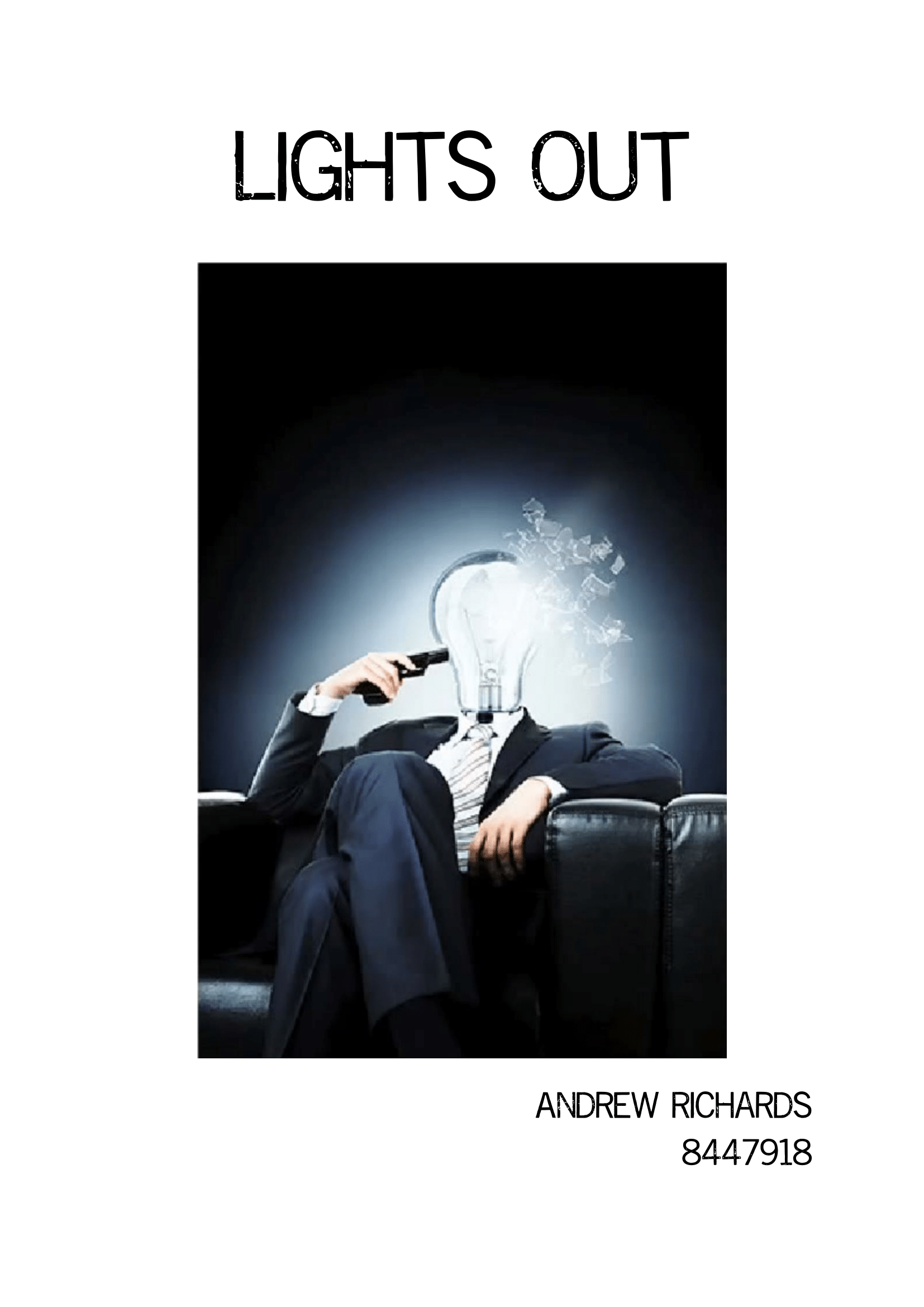
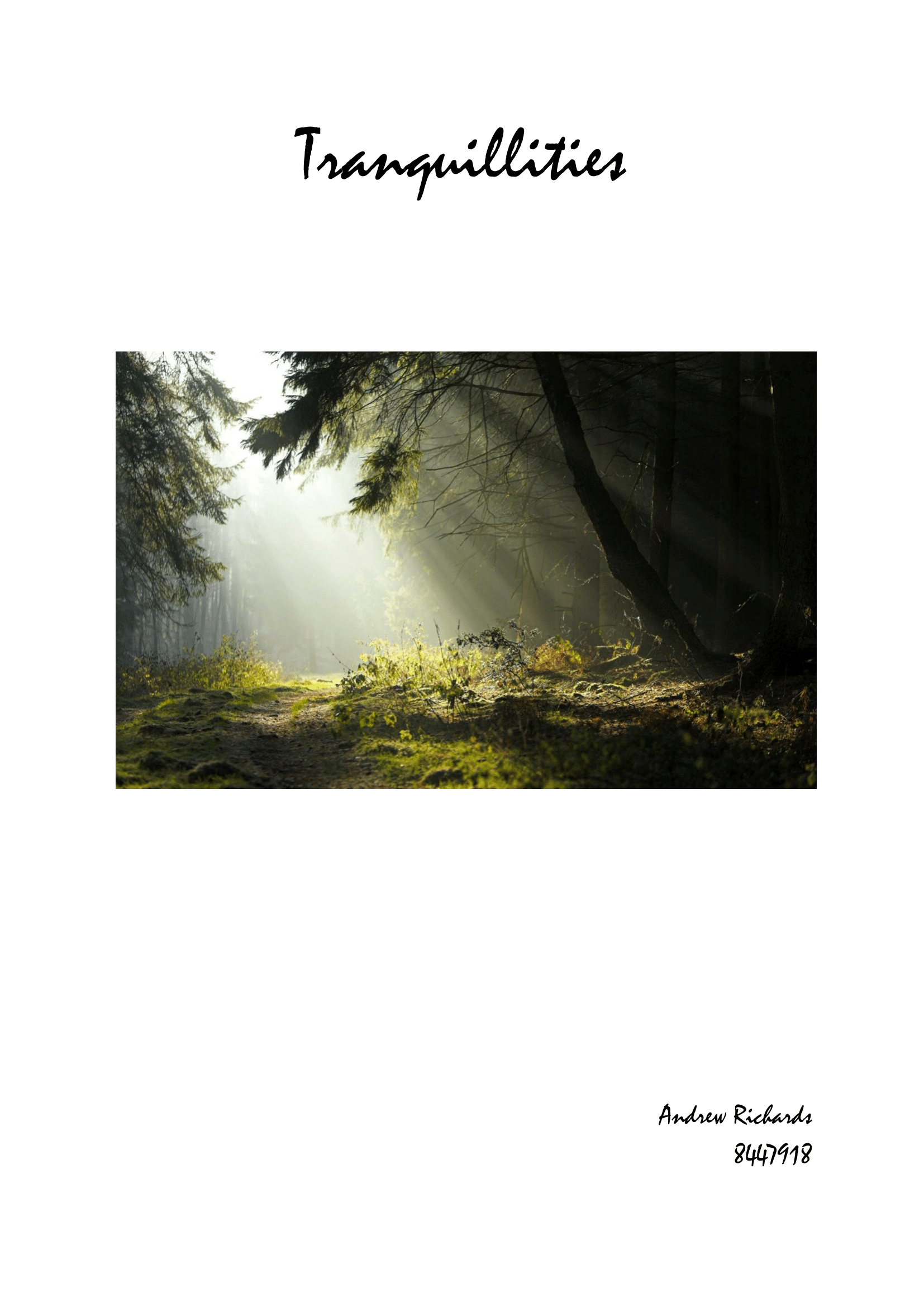
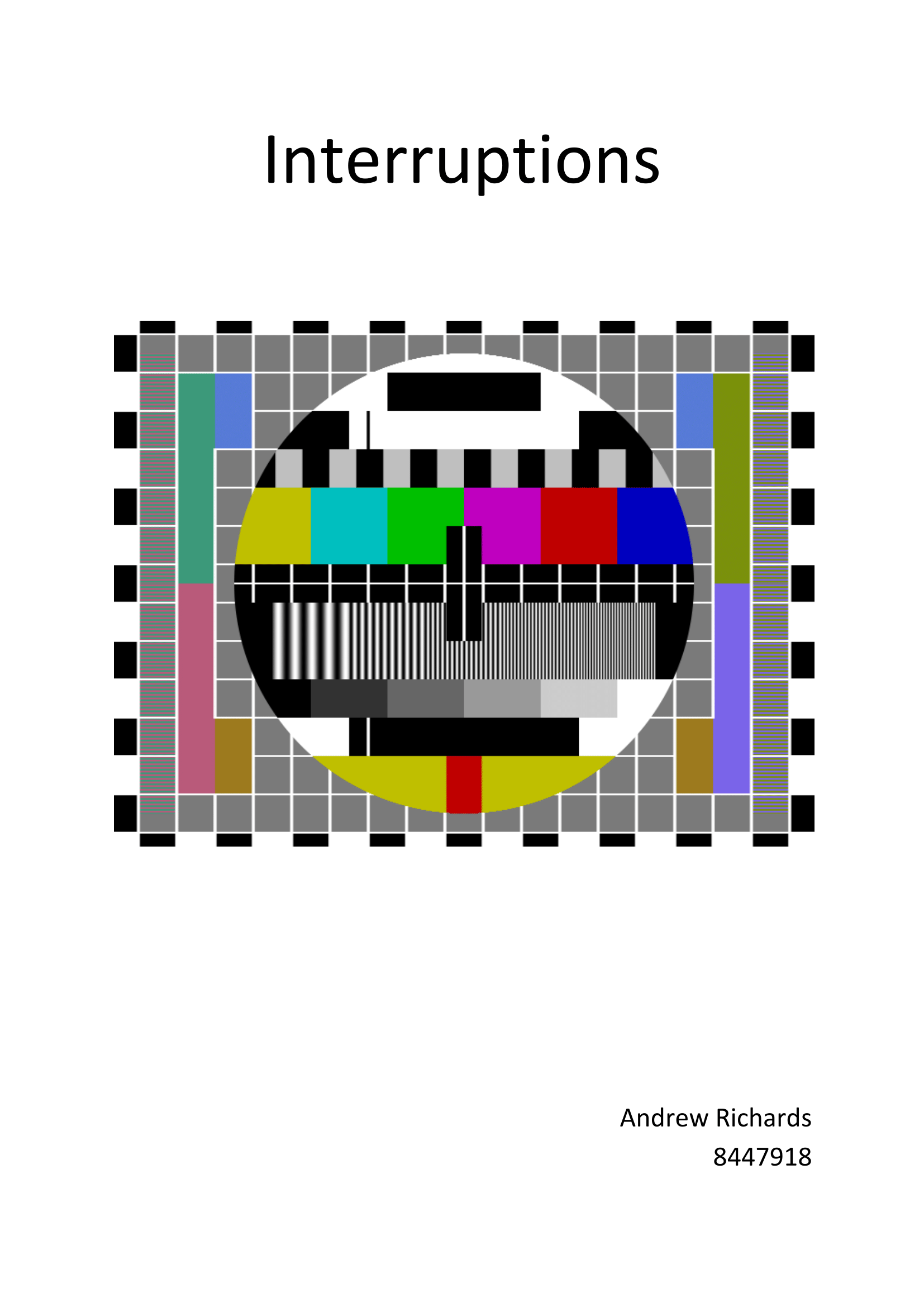
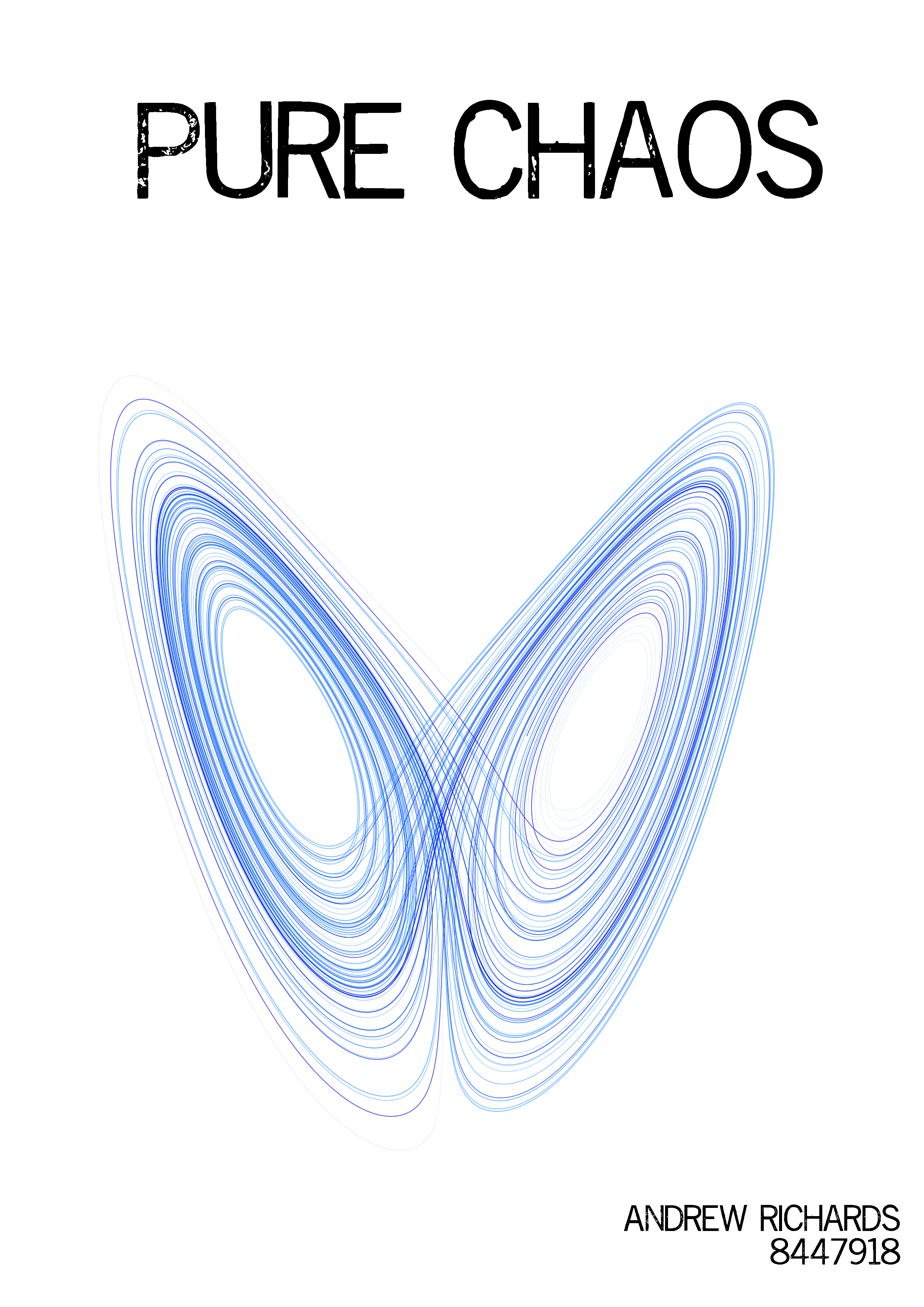
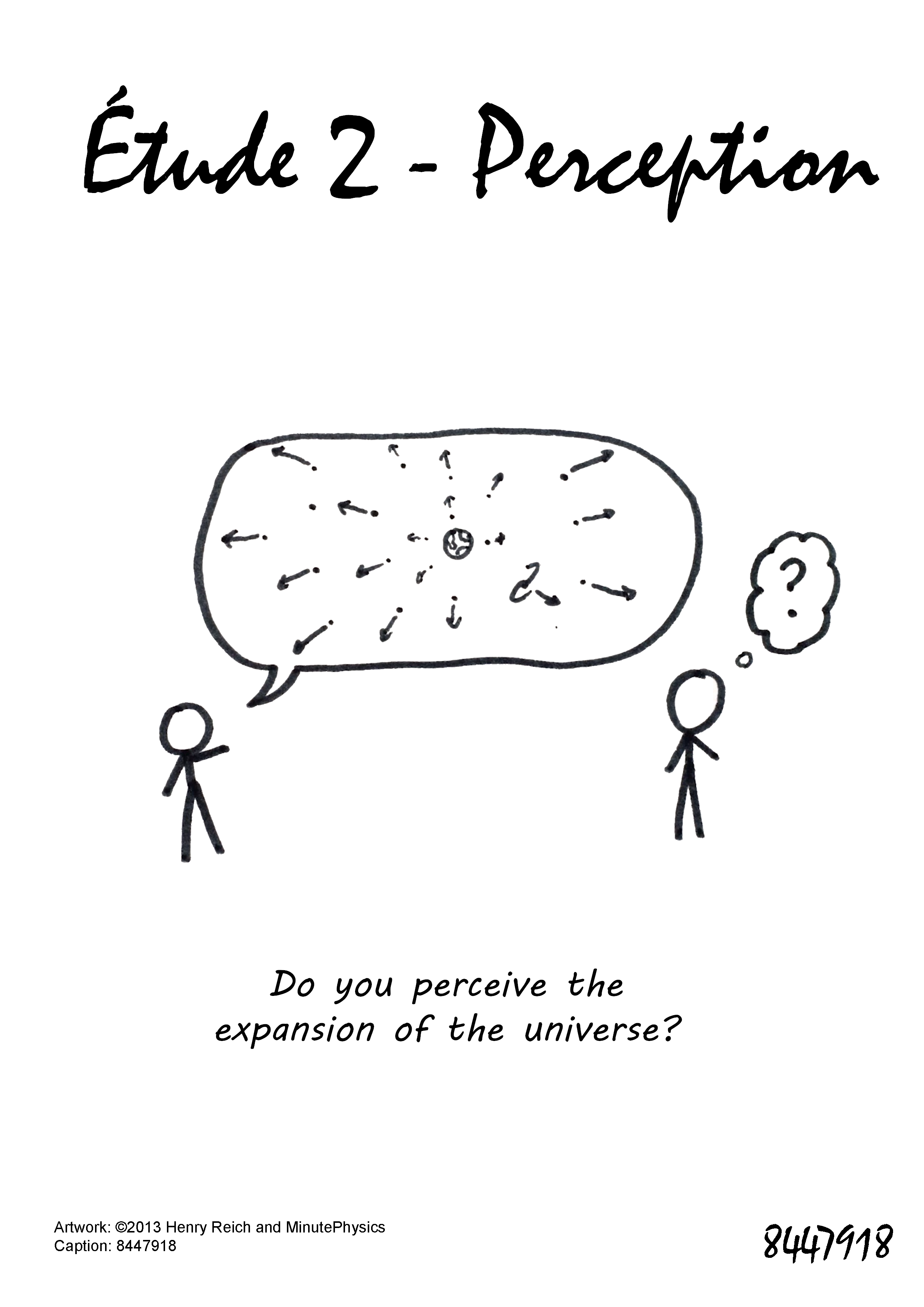
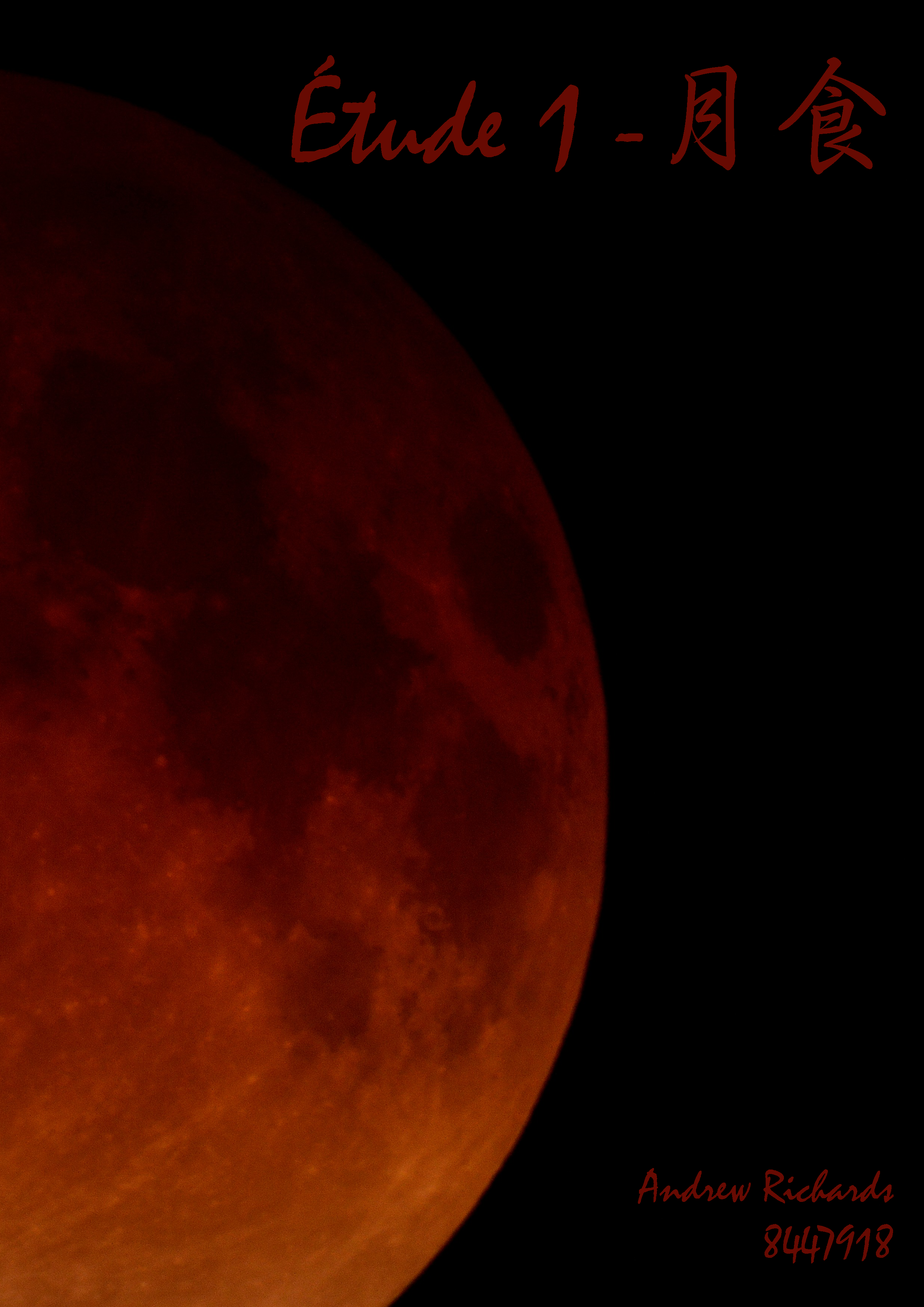
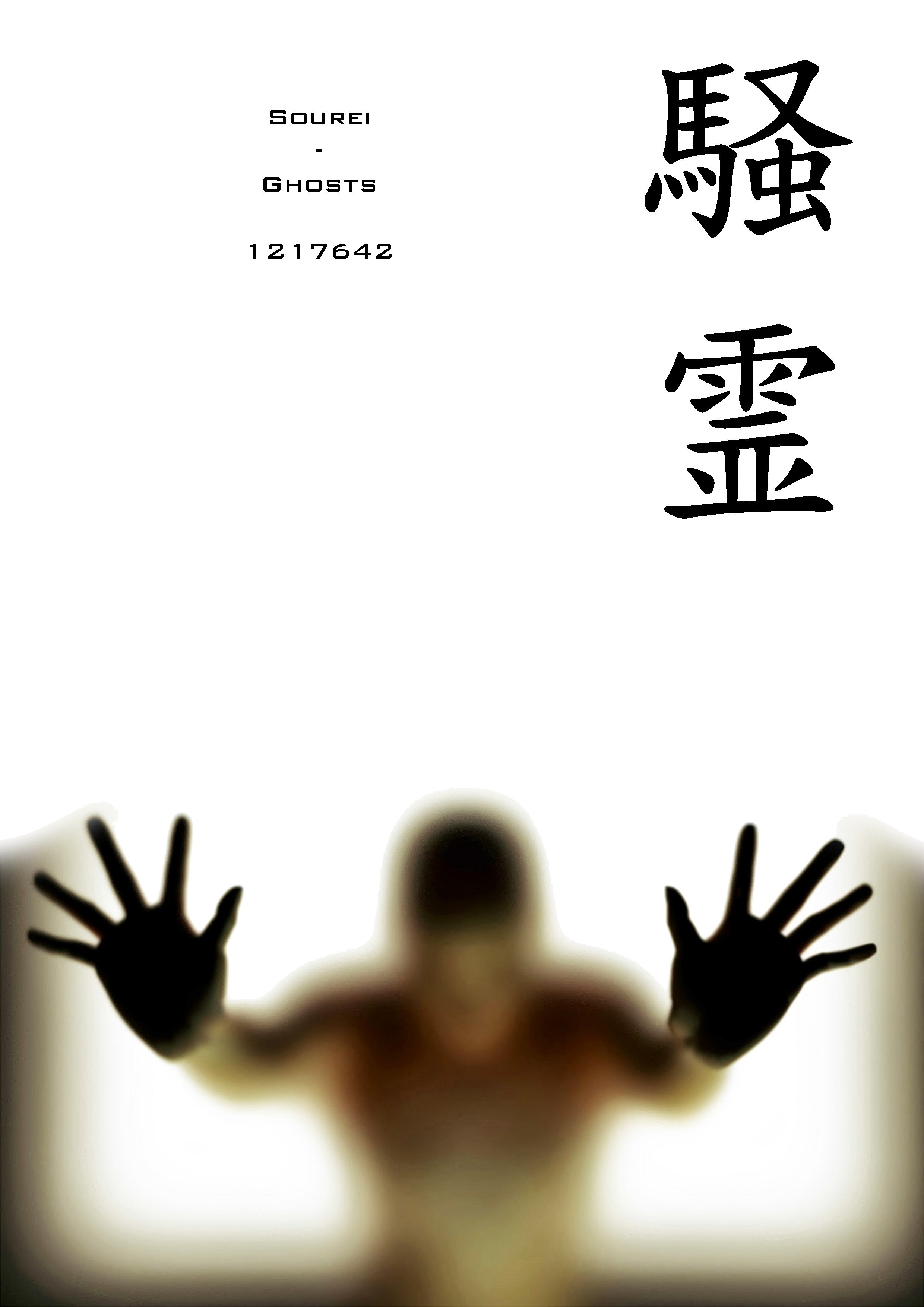
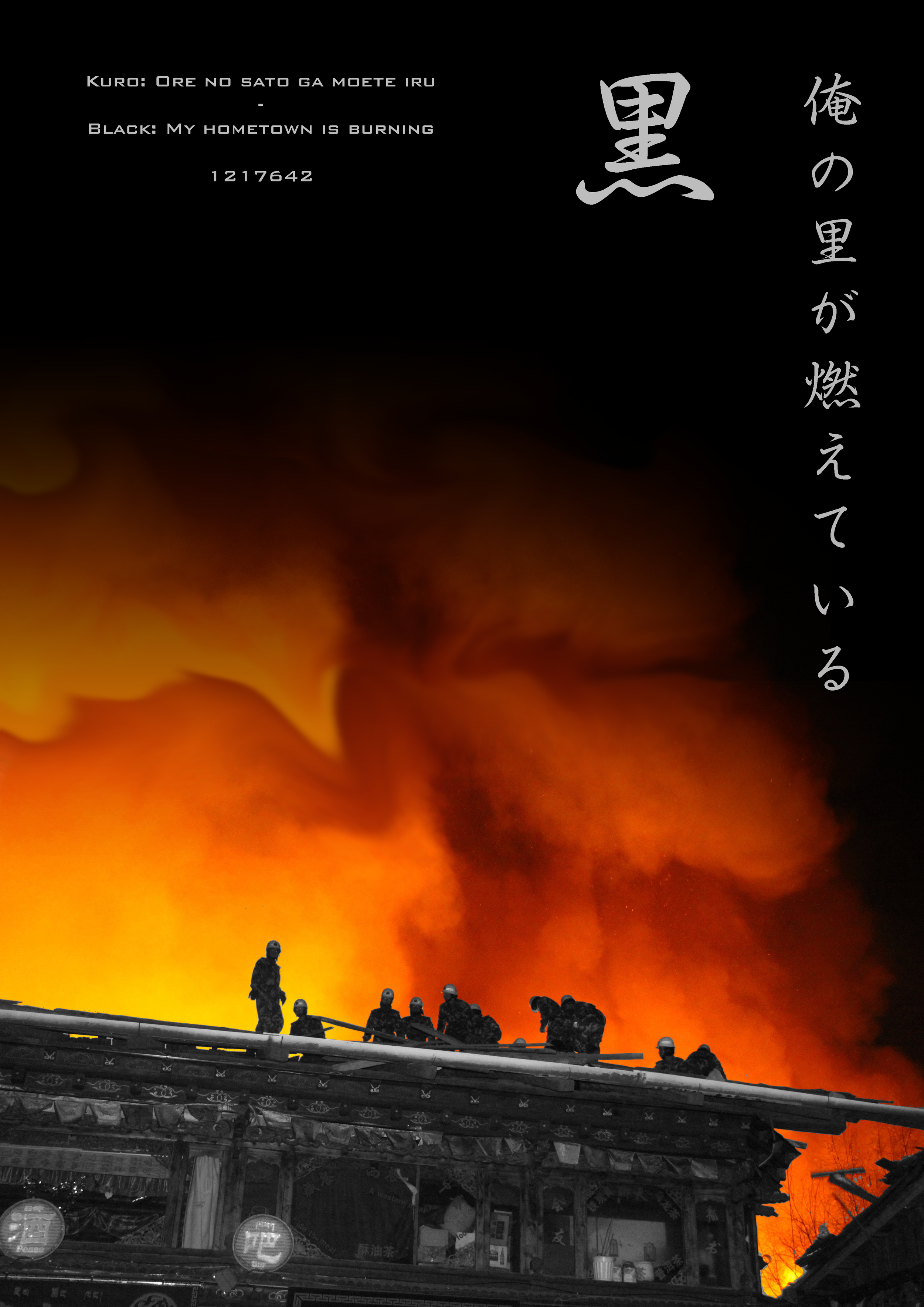
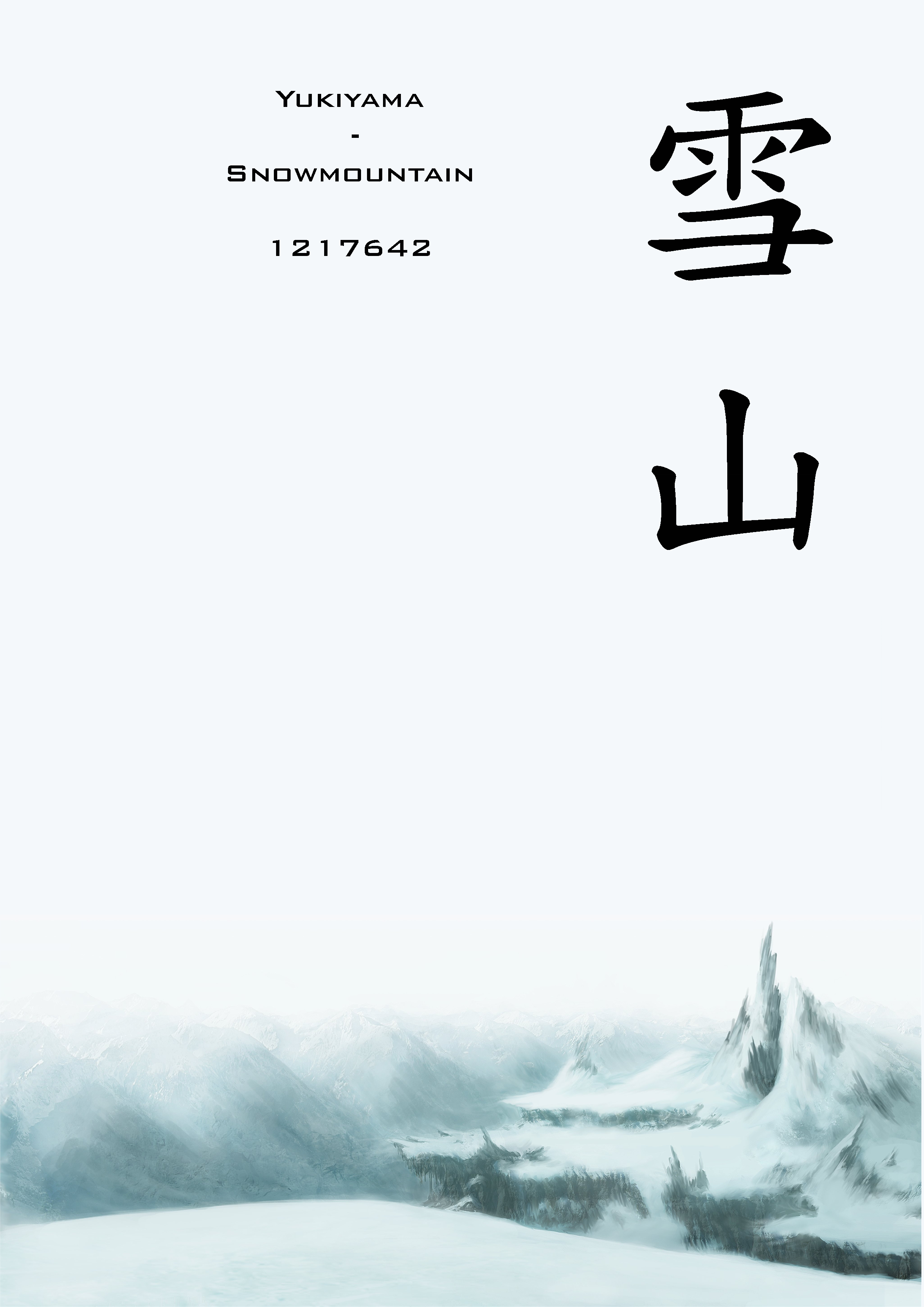
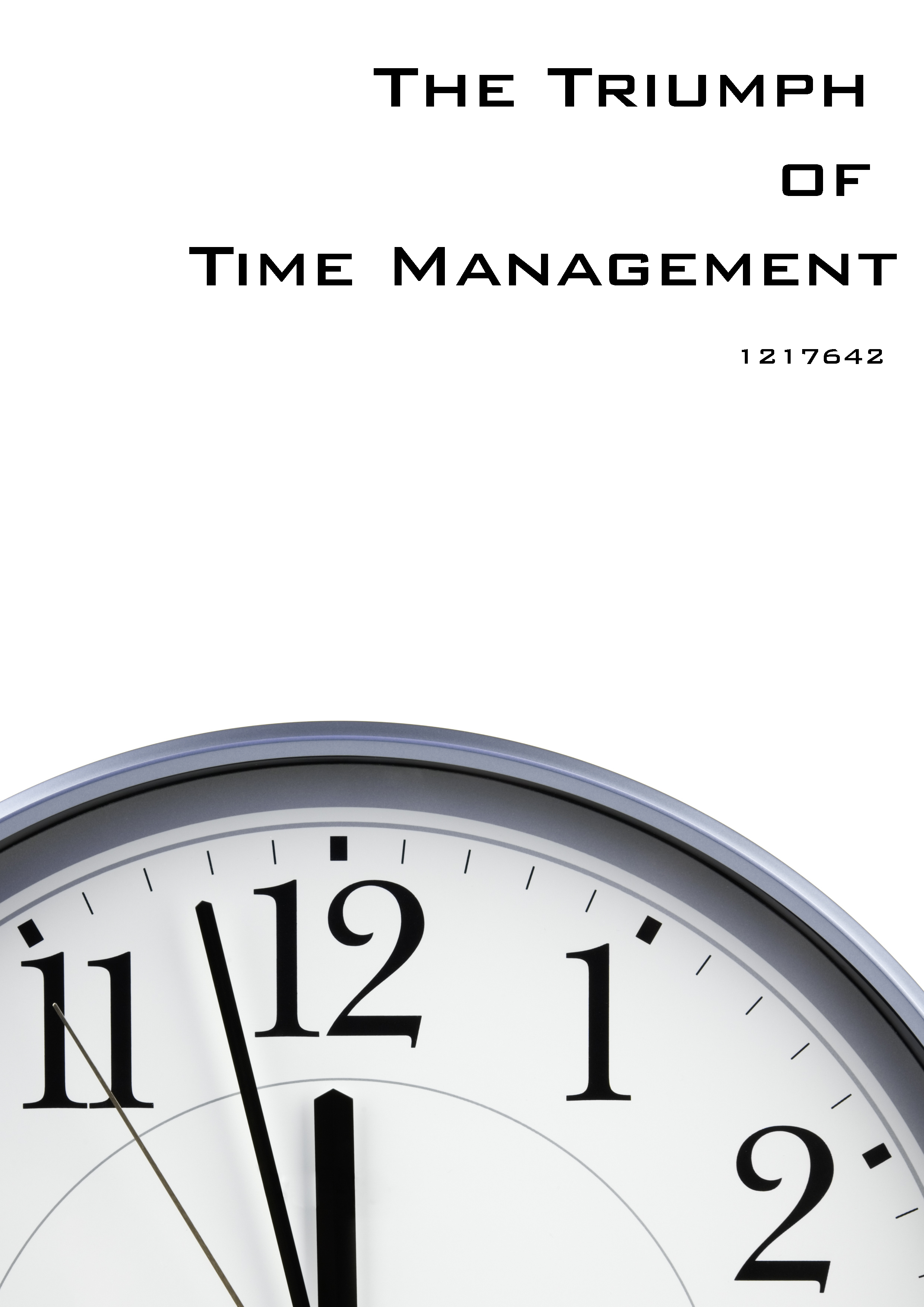
運命の赤い糸 - Unmei No Akai Ito
Percussion (4 Players):
Timpani
Bass Drum
Suspended Cymbal
Tam-Tam
Glockenspiel
Triangle
Piano
Harp
Strings
Instrumentation:
3 Flutes
(2nd doubling Piccolo)
(3rd doubling Alto Flute)
2 Oboes
Cor Anglais
2 Clarinets in Bb
Bass Clarinet in Bb
2 Bassoons
Contra-Bassoon
6 Horns
2 Trumpets (with straight mutes)
2 Tenor Trombones
Bass Trombone
Tuba
Programme Note:
This is the first large orchestra piece I've worked on since my Bachelor's degree in Cardiff. The 'red thread of fate' [unmei no akai ito] is a mythical thread that links two people, who are destined to meet and help each other. The opening idea of the piece is transformed by meeting the other person. This is still currently a work in progress and is definitely influenced by Makoto Shinkai's '君の名は' (Kimi no na wa) [Your Name].
Duration: 7 minutes 57 seconds
Date of Composition: September 2016 - September 2017
Cover Artwork:
Hand drawn by me!
Testimonials:
- Really atmospheric, love the orchestrations, and the meaty bass clarinet part is brill, well done Andy! - Grace Winpenny
- Atmospheric is definitely the word. A future in film scoring? - Ian Stephenson
- I have an untrained ear so I'm glad Ian [Stephenson] had the same thought as me when listening. Conjured up a romantic journey with all the ups and downs of a relationship between two soul mates. well done Andy - Janet Stokes
- I found the piece most evocative of the story line : initial loneliness morphing into a beautiful harmony representing togetherness. The last minute seems to presage a coming change. Well done Andrew. - Mike Richards
- Love this music! It's music quality music. I love the darkness and the mixture of the beauty of the harmony. Well done! - Gloria Hass
- Interesting start,with lovely melodic tones further into the piece,great light and shade , I enjoyed it Andrew. - Hilary Finch
Lights Out
Instrumentation:
3 Tenor Trombones
Bass Trombones
Electric Piano (Amplified and tuned a quarter-tone up)
with Piano, String Pad and Organ Sounds
Programme Note:
Lights Out is the summative piece for my composition portfolio, and it intends to be big, bold, and brash. I wanted to explore a combination of standard and quarter-tone tuning systems, which this piece presents as a conflict. The electric piano and trombones rarely agree on the tuning, and the one will often seek to undermine the other. Ultimately, this conflict reaches culmination as the final waltz disintegrates into delirium, insanity and its final grotesque form, until it is Lights Out for the piece.
Duration: 7 minutes 20 seconds
Date of Composition: June - August 2016
Cover Artwork (from YouTube):
Extra Credits, 'Extra Credits: Free Speech’, YouTube https://www.youtube.com/watch?v=RKdGBcYrdok , at 6:25 (published 31 January 2012) (accessed 8 August 2016).
Tranquillites
Instrumentation:
String Quartet
Programme Note:
Tranquillities is a harmonic and timbral exploration into the string quartet. The piece focuses on the voicing of chords along with subtle textures, which are interrupted by the splashes of rain/colour from the col legno battuto.
The piece expresses the relaxing feeling of walking through a forest - something, which I did at the end of my undergraduate degree. During my walk, the rain started to pour down. Partially sheltered by the canopy of the trees, I walked on – immersed in the experience of it all. Unfortunately, the piece isn’t fully able to disconnect from reality, as at some point the protagonist needs to return, and the piece to end.
Commission:
Place: The Cosmo Rodewald Concert Hall, The Martin Harris Centre for Music and Drama, The University of Manchester, Bridgeford Street, Manchester, M13 9PL, UK
Date: 10th March 2016
Composed for, and performed by: The Danel Quartet
Duration: 4 minutes 50 seconds
Date of Composition: January - February 2016
Cover Artwork (from Website):
Arcanum Divinus, 'Reflections on the Magistery of the Forest', arcanumdivinus https://arcanumdivinus.wordpress.com/reflections-on-the-magistery-of-the-forest/ (published February 2011) (accessed 8 February 2016).
Interruptions
Instrumentation:
Violin
Trumpet in C
Bass Clarinet in Bb Percussion:
- Vibraphone
- Temple Blocks
- Snare Drum
- Bongos
Programme Note:
Interruptions is an instrumental work exploring instrumental colours, alongside the use of developing ‘ostinato-like’ figures, and how they are interrupted. Interruptions is a representation of the daily interruptions that occur leading to lost time, arguments and ambiguity. The music changes quickly from instrument to instrument, as well as its style; when the discourse becomes too much, the music grinds entirely to a halt. The parts play off each other in order to interrupt the flow of the piece; each instrument wants the lime-light and to have their voice heard.
Commission:
Place: The Cosmo Rodewald Concert Hall, The Martin Harris Centre for Music and Drama, The University of Manchester, Bridgeford Street, Manchester, M13 9PL, UK
Date: 22nd February 2016
Composed for, and performed by: The Vonnegut Collective
Duration: 3 minutes 15 seconds
Date of Composition: November 2015 - February 2016
Cover Artwork (from Website):
Zacabeb, ‘PM5544 with non-PAL signals’ Wikimedia Commons https://commons.wikimedia.org/wiki/File:PM5544_with_non-PAL_signals.png (published 17 May 2009) (accessed 12 February 2016). [Public Domain]
Pure Chaos
Instrumentation:
Violin
Bass Clarinet in Bb
Piano
Programme Note:
Pure Chaos takes a unique approach to the generation of musical material; all of the pitch material was derived from a random number generator, whose output was limited to between 0 and 11. Once all the numbers had occurred in the string, the set was complete.
The set used is as follows (where: C=0, C#=1 … B=11): 2, 1, 8, 0, 0, 8, 6, 7, 1, 1, 7, 10, 6, 9, 7, 5, 10, 5, 1, 1, 3, 1, 1, 1, 0, 5, 11, 2, 9, 7, 5, 2, 11, 9, 2, 9, 5, 4.
As you can see 1 =C# is the most common number, while 4=E is the least, which lends itself to be a note of particular focus. Thus, certain sections and moments of arrival are designed to show their significance.
As a final note, it is worth remembering than the piece could have been radically transformed if the set was different in length, or different in the frequency of pitch content (i.e. having more fours than ones). The smallest change in initial condition can have dramatic effects on the outcome; similar to Chaos Theory.
Commission:
Place: St. Michael’s, 36-38 George Leigh Street, Ancoats, Manchester, M4 5DG, UK
Date: 12th December 2015
Composed for, and performed by: Psappha.
Duration: 6 minutes
Date of Composition: October - November 2015
Cover Artwork (from Website):
Wikimol and Dschen, ‘Lorenz attractor yb’ Wikimedia Commons https://commons.wikimedia.org/wiki/File:Lorenz_attractor_yb.svg (published 4 January 2006) (accessed 8 November 2015). [Public Domain] [Image is chromatically inverted]
Étude 2 – Perception
Instrumentation:
Violin
Viola
Violoncello
Programme Note:
The accelerating stratum is found in the violin (bb.4-19), and the decelerating stratum is found in the viola (bb.2-19). At figure B, the role of the instruments change, now the viola is accelerating and the violoncello is decelerating.
One of the distinct features of this piece’s texture and its composition is the third part (found first in the violoncello, then violin). This part functions as a pseudo-metronome. It clearly defines the metre and the pulse, off of which the two other strata can interact. The interruption at bb.20-24 helps to reset the music and the listener’s ear, while assisting the violoncello’s fast entry in the second section.
As a result of the way that the third part functions, the perception of the accelerating and decelerating strata is fixed in time. Yet without the pseudo-metronomic part, the relationship between these strata is only relative. To know whether a ball falls down to the earth, or the earth falls up to the ball, you need to fix your frame of reference and thus your perception of reality.
Composed for the players of the Danel Quartet.
Duration: 2 minutes
Date of Composition: November 2015
Étude 1 -月食 -Gesshoku – Lunar Eclipse
Instrumentation:
Voice
Alto Flute
Programme Note:
This piece takes its inspiration from the recent lunar eclipse that happened in September 2015. Many cultures across the world interpret these celestial events as bad omens. They speak of the moon (or the sun; in the case of a solar eclipse) being eaten by gods, demons or forces beyond early-human understanding.
The Japanese word for lunar eclipse is 月食 (Gesshoku), which is comprised of the Chinese characters ‘moon’ - 月 (Getsu), and ‘to eat’ - 食 (Shoku). Thus, a literal translation could be ‘eaten moon’ or ‘moon-eater’.
Thus, the piece is a commentary by that force, which has ‘eaten’ the moon. That force (god or demon) is somewhat revelling in the trick that they have played on humankind. Hence, the commentary provided by the voice has a mad and a slight mocking quality to it. The alto flute provides a multi-facetted role; playing both as a solo commentary, and as an accompanying part.
The rhythmic statement starts in Bar 1 beat 1, and finishes in Bar 3 beat 5. The statement is initially developed in the alto flute, and further developed in the voice through augmentation in the repeat.
Composed for the players of Trio Atem.
- Nina Whiteman (Voice)
- Gavin Osborn (Alto Flute)
Duration: 2 minutes 30 seconds
Date of Composition: October 2015
騒霊 - Sourei - Ghosts
Instrumentation:
Alto Flute
Oboe
Clarinet
Horn
Contra-Bassoon
Programme Note:
This piece is based on the Japanese word ‘騒霊’[sourei], which sounds like the English word ‘Sorry’, but the translation of ‘騒霊’ [sourei] is ‘ghost’ or ‘poltergeist’. The haiku below tells the story of a person being constantly haunted by these poltergeists; though this person is determined to reject the poltergeists’ apologies.
The piece features the text being whispered by the performers, while other sound effects, such as key clicks and blowing air through the instrument, are created by the other performers. The instrumentation features both the Alto Flute and the Contrabassoon, which adds a dark and unsettled colour.
Duration: 3 minutes 30 seconds
Date of Composition: March – April 2015
黒:俺の里が燃えている - Kuro: Ore on sato ga moete iru - Black: My home town is burning
Instrumentation:
3 Flutes
(2nd doubling Piccolo)
(3rd doubling Alto Flute)
2 Oboes
Cor Anglais
2 Clarinets in Bb
Bass Clarinet in Bb
2 Bassoons
Contra-Bassoon
6 Horns (with straight mutes)
2 Trumpets (with straight mutes)
2 Tenor Trombones (with straight mutes)
Bass Trombone
Tuba
Percussion (4 Players):
Timpani
Snare Drum
Bass Drum
Suspended Cymbal
Tam-Tam
Temple Blocks
Bongos
Shaker
Tubular Bells
Glockenspiel
Marimba
Harp
Strings
Programme Note:
Kuro focuses on the Japanese word for black (黒 [Kuro]), which shares similarities with the Japanese word (里 [Sato]) in terms of its logography. The addition of the horizontal fire radical (灬) under the character for hometown forms the character for black. This is certainly an unconventional style reading the character, but because of the intrinsic meaning of these Chinese radicals and characters, there are sub-meanings within the characters that go beyond the normal Chinese and Japanese.
From this idea of a burning town, I wanted to add a human element, which is displayed in the larger structure of the piece. The piece is thus based on a made-up story of a brother (和夫 [Kazuo]) and his older sister (由美 [Yumi]), who collect firewood for the family home. Yumi is unsure whether the destruction of the surrounding woodlands is going too far; Kazuo does not really see Yumi’s point. The next day they meet their friend (楓 [Kaede]) in the forest. Kaede is well accustomed to life in the forest, and he is represented by the Alto Flute part. He has these seemingly magic abilities to call on the wildlife, and defend people, from it. The three children plan to return to the town, but they discover the place a blaze. Someone or something set the town alight.
This story aligns with the section title:
First Section: The previous night’s fire (I:火の煎夜)
Second Section: Let’s go to the forest (II:林に行こう)
Third Section: I can’t return home (III:帰られない)
Duration: 11 minutes
Date of Composition: November 2014 – March 2015
雪山 -Yukiyama - Snowmountain
Instrumentation:
2 Pianos
Programme Note:
This piece portrays the snowy setting of the Japanese Alps in the heavy winter, along with the joys of playing in the snow and the traditional pastime of Yukimisake (雪見酒), where people sit and admire the snow with drink of sake (Japanese rice wine). The piece relies on gesture to present the various characteristics of the movements.
The origin of the material is derived from the Chinese characters (漢字 [Kanji]) for Snow: 雪 [Yuki] and Mountain: 山 [Yama], which are presented pictorially on the staves. The complexity of the character of Snow means that the character is broken up according to its stroke order.
There are five movements which describe certain aspects of the snow. The first movement describes the snow falling over the Japanese Alps, and second describes the harsh reality of being lost in the mountains in the middle of winter with the less than friendly wildlife. The third and the fourth both explore the excitement of children (and adults) waking up to find blankets of snows, and the fun of playing in the snow. The final movement describe the traditional pastime of Yukimisake, which is quotes part of a Japanese children’s song: Yuki ya kon kon.
The five movements are:
First movement: Snowfall (第一楽章:降雪)
Second movement: The Night and the Wolf (第二楽章:夜と狼)
Third movement: The Next morning (第三楽章:翌朝)
Fourth movement: Play time (第四楽章:遊び時間)
Fifth movement: A Snow View with a Drink (第五楽章:雪見酒)
Duration: 9 minutes
Date of Composition: October 2014
The Triumph of Time Management
Instrumentation:
Voila
Trombone
Piano Percussion:
- Snare Drum
- Suspended Cymbal
- Woodblock
- Vibraphone
Programme Note:
The piece had its world premiere on 15 November 2014 at Cardiff University School of Music, Concert Hall, with good reception from both the audience and the conductor, Dr D Bickerton. Below is the programme note in the original programme from the premiere:
‘Going in to my final year of my undergraduate degree; ‘Time Management’ was going to be vital to maintain the last remanences of sanity that had been worn thin by the previous two. The disjunct and syncopated nature of the piece reflects the constant flitting to and from work, eating and most important: Sleep! Working solely from the intervallic content of the supplied motif, the pitch material and main motif were generated, and with help from my tutor the piece developed in to its final shape.’
Duration: 1 minutes 30 seconds
Date of Composition: September 2014
